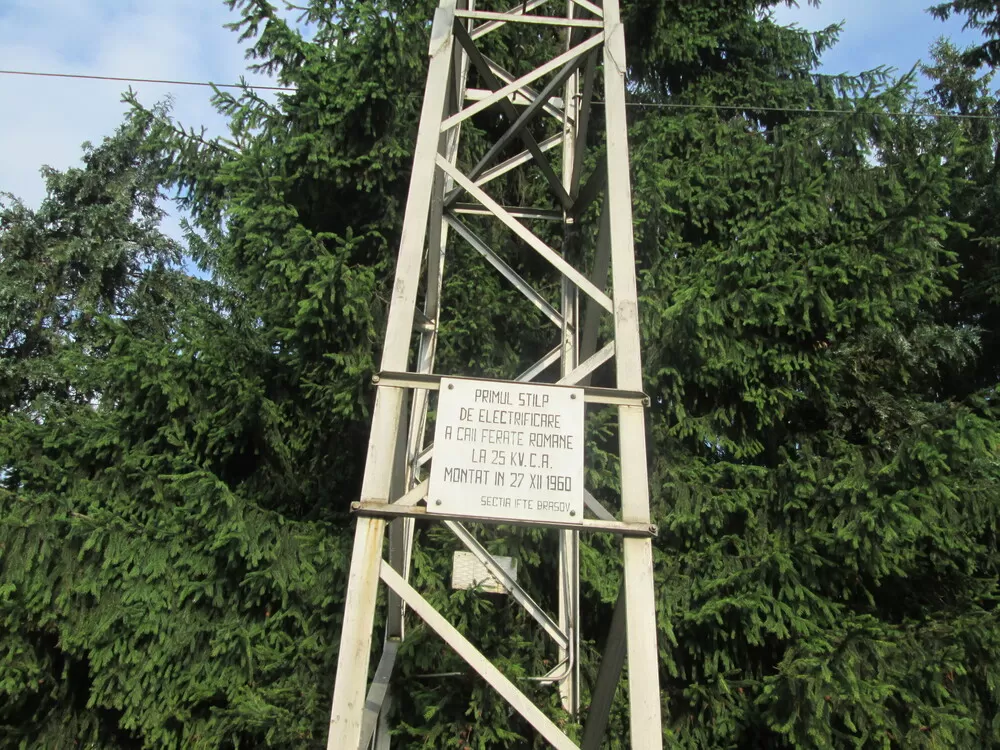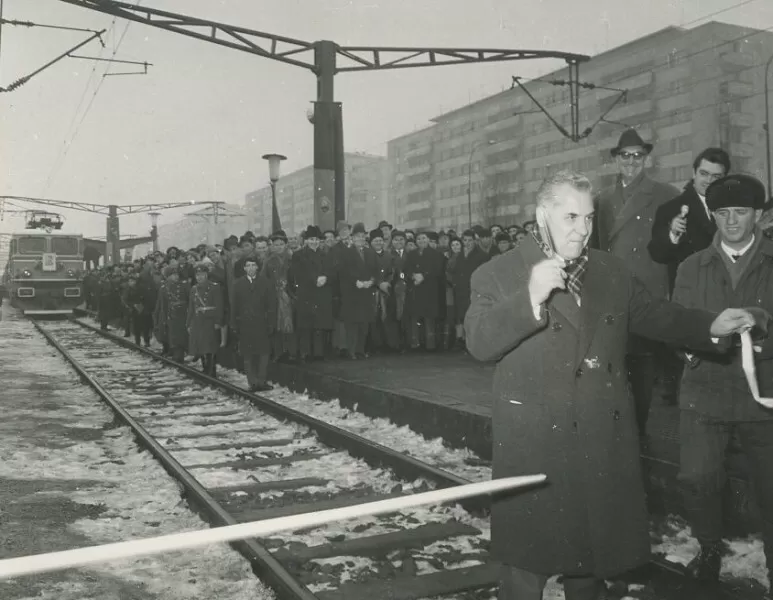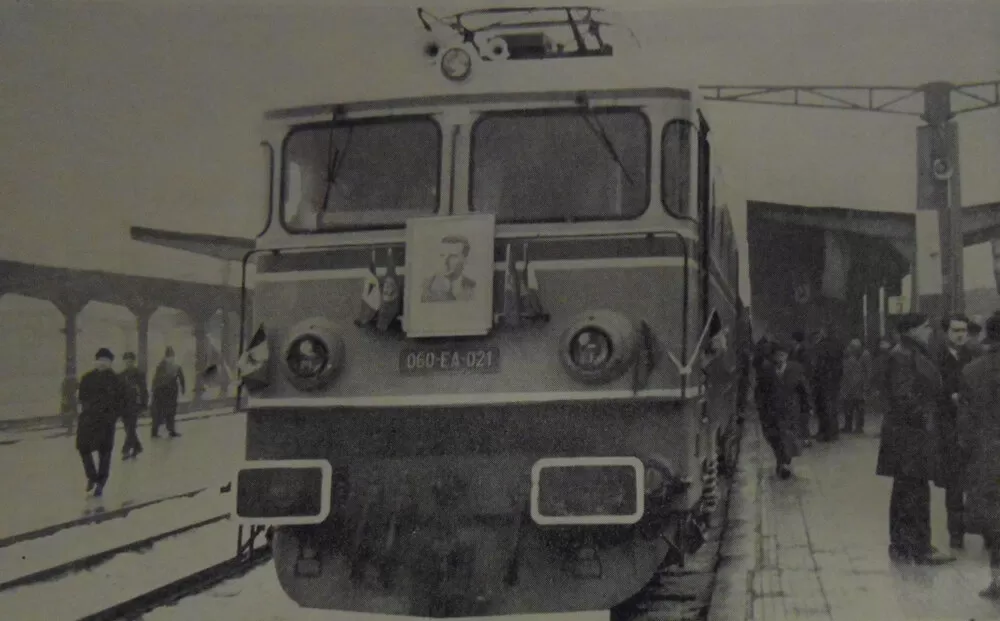Electrification of the Romanian railways
1913
The first Romanian railway to be electrified is the metric gauge
interurban private railway Arad - Ghioroc - Pâncota and Radna,
electrified in 1913 with 1650 V DC (direct current).
At the same time, the first electrification project is created by professor I.S. Gheorghiu for the national railroad network. Due to strategic defence reasons, it is envisaged to build an electrified line between Pietrosita and Sinaia and continue the electrification to Predeal, which was the heaviest used line at the time and also a mountain railway.
At the same time, the first electrification project is created by professor I.S. Gheorghiu for the national railroad network. Due to strategic defence reasons, it is envisaged to build an electrified line between Pietrosita and Sinaia and continue the electrification to Predeal, which was the heaviest used line at the time and also a mountain railway.
1920s and 1930s
The traffic on the railway line between Câmpina and Brasov is
saturated and continues to grow. To further increase capacity it
was necessary to electrify the line and laws are voted by the
government in 1929 and 1934. The political turmoil during this
period, the lack of specialised engineers and the availability of
local oil and coal reserves delayed the implementation and the
Second World War made all these projects obsolete.
1942
During the war, double track is introduced on the Câmpina to Brasov
section, but the limited power of steam engines represents a
critical limitation.
On September 12th, 1942, and following a law adopted the same year, the Romanian Railways (CFR) create the "Direction of electrification" under the leadership of engineer Dimitrie Leonida.
But once again, due to war events and the economic situation, the project is never realised.
On September 12th, 1942, and following a law adopted the same year, the Romanian Railways (CFR) create the "Direction of electrification" under the leadership of engineer Dimitrie Leonida.
But once again, due to war events and the economic situation, the project is never realised.
1950s
After the war, discussions to electrify the Bucharest to Brasov
railway continue.
IPCF ("Institutul de Proiectari Cai Ferate", the Romanian Railway Design Institute) decides in 1958, based on the recommandations made at the U.I.C. congresses in Annency (France) in 1951 and in Lille (France) in 1955, to use a single phase, alternative current, 50 Hz at 25 kV.
The first section to be electrified is the Predeal to Brasov section.
IPCF ("Institutul de Proiectari Cai Ferate", the Romanian Railway Design Institute) decides in 1958, based on the recommandations made at the U.I.C. congresses in Annency (France) in 1951 and in Lille (France) in 1955, to use a single phase, alternative current, 50 Hz at 25 kV.
The first section to be electrified is the Predeal to Brasov section.
1960
December 27th
 The
electrification works of the main railway network in Romania
started on December 27th, 1960, when Liviu Vintila and his team
install on a foundation of monolithic concrete the first metallic
mast which sustains elastic cross span n° 69.
The
electrification works of the main railway network in Romania
started on December 27th, 1960, when Liviu Vintila and his team
install on a foundation of monolithic concrete the first metallic
mast which sustains elastic cross span n° 69.On this mast there is a marble plaque to commemorate the event, stating: The first electrification mast of Romanian Railroads at 25 kV a.c., installed on 27.XII.1960.
1963
June 9th
The electrification of the Predeal - Brasov section is finalised by
1963.
The official opening takes place on June 9th, 1963, when, in the presence of the then head of state, Gheorghe-Gheorghiu-Dej, the electric locomotive BB-12141 tows the first train to Predeal.
At the same time, a comparative testing takes place on the newly electrified section to choose the best option for the future electric locomotives to be used by the Romanian Railways (CFR). This 26 km line is the perfect testing environment: ramps between 17‰ and 23‰ with short stretches up to 27‰ and numerous tight curves.
Four European manufacturers take part in these trials and a total of six locomotives are tested:
- Alstom (France) presents 2x BB 12000 locomotives, units BB 12131 and BB 12141;
- ASEA (Sweden) presents 2x Rb 1 prototypes, units 1001 and 1002;
- Škoda (Czechoslovakia) presents 1x S 479.0 prototype, unit E479.002;
- VEB Lokomotivbau Elektrotechnische Werke "Hans Beimler" presents 1x prototype.
At the end, the Romanian Railways (CFR) officials decide to sign a contract with ASEA (Sweden) for the delivery of 10x complete locomotives and parts for another 28x locomotives to be built in Romania. The locomotives on order are different from the Rb 1 prototypes: they will be 6 axles in a Co'-Co' configuration with maximum power of 5400 kW. These units will be designated as series 060-EA.
The official opening takes place on June 9th, 1963, when, in the presence of the then head of state, Gheorghe-Gheorghiu-Dej, the electric locomotive BB-12141 tows the first train to Predeal.
At the same time, a comparative testing takes place on the newly electrified section to choose the best option for the future electric locomotives to be used by the Romanian Railways (CFR). This 26 km line is the perfect testing environment: ramps between 17‰ and 23‰ with short stretches up to 27‰ and numerous tight curves.
Four European manufacturers take part in these trials and a total of six locomotives are tested:
- Alstom (France) presents 2x BB 12000 locomotives, units BB 12131 and BB 12141;
- ASEA (Sweden) presents 2x Rb 1 prototypes, units 1001 and 1002;
- Škoda (Czechoslovakia) presents 1x S 479.0 prototype, unit E479.002;
- VEB Lokomotivbau Elektrotechnische Werke "Hans Beimler" presents 1x prototype.
At the end, the Romanian Railways (CFR) officials decide to sign a contract with ASEA (Sweden) for the delivery of 10x complete locomotives and parts for another 28x locomotives to be built in Romania. The locomotives on order are different from the Rb 1 prototypes: they will be 6 axles in a Co'-Co' configuration with maximum power of 5400 kW. These units will be designated as series 060-EA.
1965
December 9th
On December 9th, 1965, the first 060-EA electric locomotive delivered by
ASEA (Sweden), registration 060-EA-001, made its
maiden voyage from Brasov to Predeal.
1966
April 20th
By April 20th, 1966, the electrification of the Campina to Predeal
railway section is completed.
For the Campina to Brasov section, a semi-compensated catenary system is used, allowing a maximum speed of 100 km/h.
For the Campina to Brasov section, a semi-compensated catenary system is used, allowing a maximum speed of 100 km/h.
1967
By the end of 1967, the electrification of the Ploiesti Vest to
Campina railway section is completed and works continue on the
final portion to Bucharest.
On this relatively flat portion between Campina and Bucharest, a fully compensated catenary system is used allowing a maximum speed of 160 km/h.
On this relatively flat portion between Campina and Bucharest, a fully compensated catenary system is used allowing a maximum speed of 160 km/h.
1969
The electrification of the last section between Bucharest to
Ploiesti of the Bucharest - Brasov railway line is completed in
1969 and on February 16th, 1969, the first passenger train towed by
electric locomotive 060-EA-021 leaves Bucharest Nord railway station.




Discussion forum


